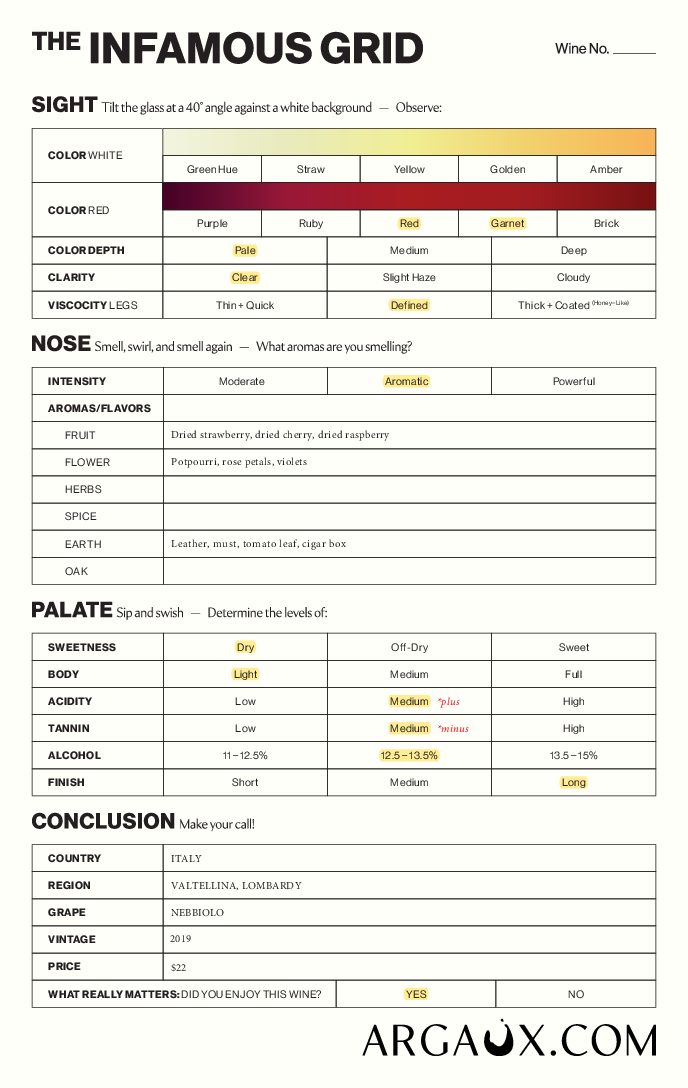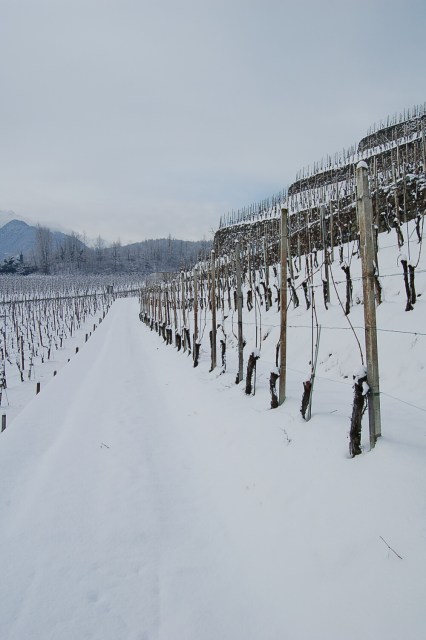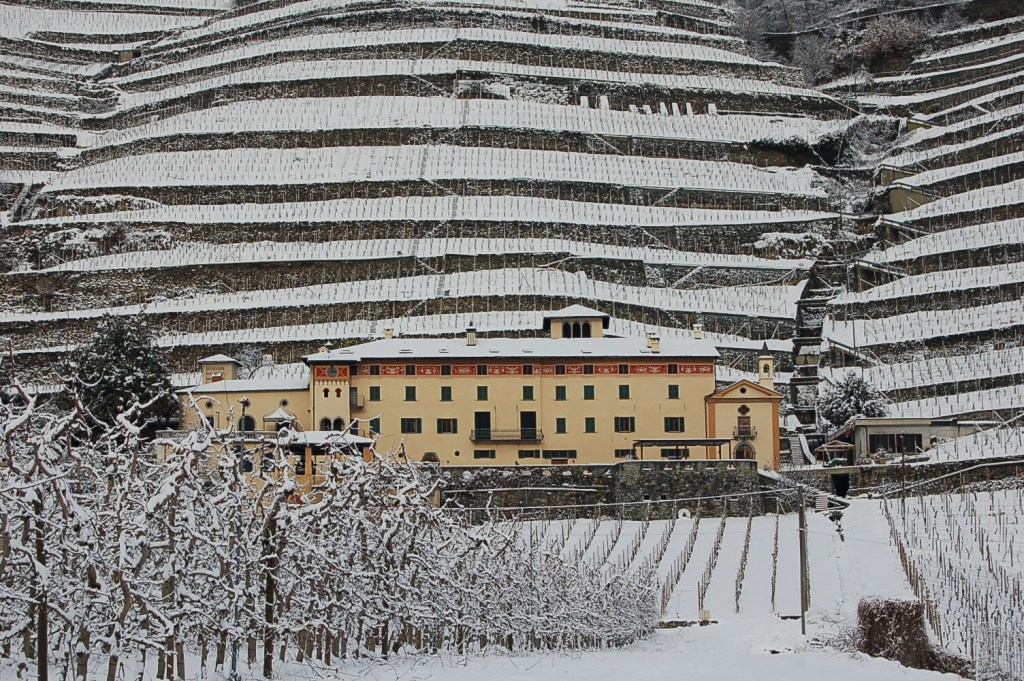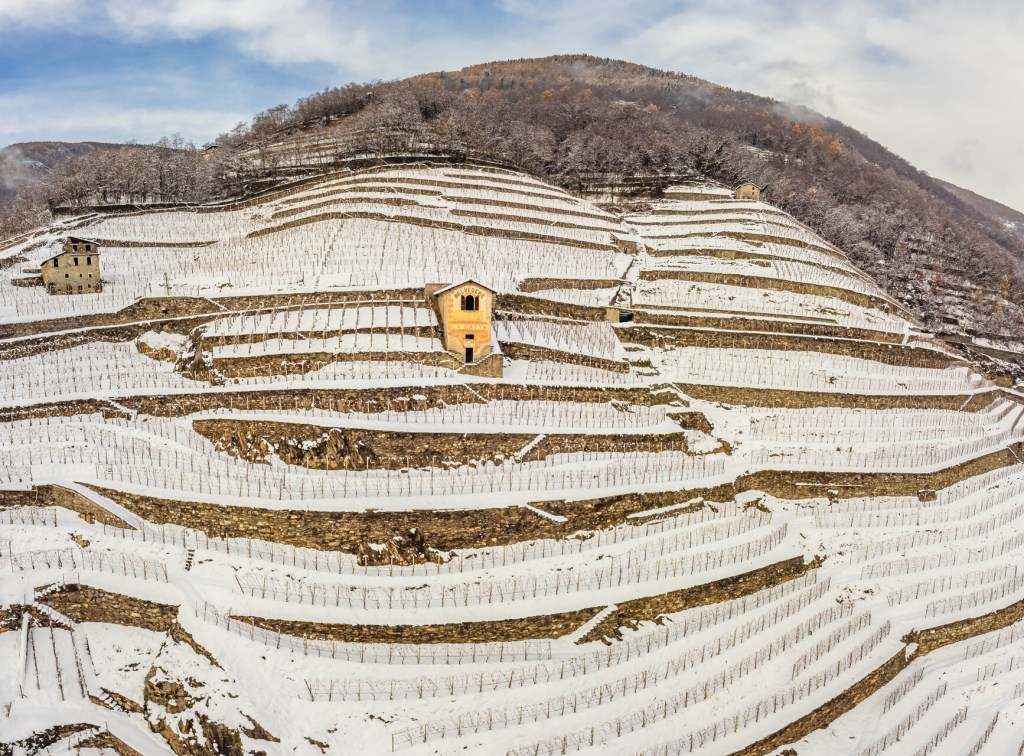2019 Casa Vinicola Triacca ‘Gaux Dopo’ Nebbiolo
This Alpine Nebbiolo is energetic, zippy, and remarkably fresh. The stainless steel fermentation maintains the wine’s bright fruit character, floral quality, and natural suppleness.
Sustainable farming practices and only 100 cases produced!
$22.00
Out of stock
Pairs with
The “La Gatta” estate was originally built in the 1500s as a Dominican monastery and was later purchased as a summer home for the aristocratic de Gatti family, from which the name derives. The Triacca family acquired the old monastery in 1969, which is surrounded by 13 hectares of vigorous vines grown on the steep hillsides of the Italian Alps. In 1987, Domenico Triacca acquired 2,000 square meters of vineyards in Valgella, one of the most highly sought after vineyard areas in Valtellina and built himself a small cellar to start producing and aging wines from his own vineyards. Today, Lucca Triacca runs the estate and is known as one of the most innovative Valtellina producers.
Valtellina lies in an Alpine valley in the northern part of the country in the Lombardy region. It actually forms part of the border between Italy and Switzerland and historically has been Swiss and Austrian territory before becoming part of Italy in 1859. The area benefits from a cool, mountain climate, though ‘La Breva,’ a gentle wind that originates over Lake Como, moves warm air into the valley and helps promote pollination in the spring. The vineyards lie on extremely steep slopes and tiny terraces (similar to the Mosel or Alto Adige) requiring it all to be worked by hand. Some suggest that Nebbiolo may have even originated in Valtellina! Today, it is known for its bright, cherry-scented Nebbiolo, known here as Chiavennasca (after the nearby town of Chiavenna).
“Nebbiolo from Valtellina has always been one of my favorite expressions of this grape. It’s Alpine wine; a much lighter and fresher version of your typical Nebbiolo from Piedmont that you might be more familiar with. They are high acid, food-friendly wines that are often significantly more affordable than your average Barolo. These wines are great with good company, a cheese & charcuterie plate, and some light pasta.” – Lexi Jones, Director of Imports
Related Items
-
2022 Domaine Charles Audoin Marsannay Cuvée ‘Marie Ragonneau’
$65.00This is a seriously good bottle of Pinot Noir. It’s giving Grand Cru-level quality for village level prices. It has layered fruit, earthy minerality and one of the silkiest, refined palates I’ve ever had. Wow this wine is good.
Certified organic farming practices (Ecocert), hand-harvested, native yeast fermentation, vegan and unfined/unfiltered.
-
2022 Clos La Coutale Cahors Malbec
$22.00Cahors is the sneakily sophisticated but humbler country cousin of Bordeaux. It’s loaded with personality and a great party pick. We are in the season of stews, roasts and game, and this French Malbec just fits the bill.
Organic farming practices and aged for a year in French oak barrels.
-
2020 Domaine Gallety ‘Côtes du Vivarais’ Rouge
$34.00This Southern Rhone stunner comes from Saint-Montan, halfway between Cornas and Châteauneuf-du-Pape. The wine is smoothe and velvety with just enough weight to pair with a burger. This wine is a crowd-pleaser.
Organic farming practices and native yeast fermentation.
-
2019 Domaine Alain Burguet Gevrey-Chambertin ‘Les Champeaux’ Premier Cru
$165.00This wine is for a Pinot Noir oenophile.
The ‘Les Champeaux’ premier cru vineyard was planted in 1987 on the northern edge of Gevrey-Chambertin. It’s located high up on the slope with south-east facing exposure which allows for slow and steady ripening. The result is a wine with great purity, structure and incredibly silky tannins.
Biodynamic farming practices, hand-harvested, native yeast fermentation, unfined/unfiltered, vegan-friendly, and only 75 cases produced.










